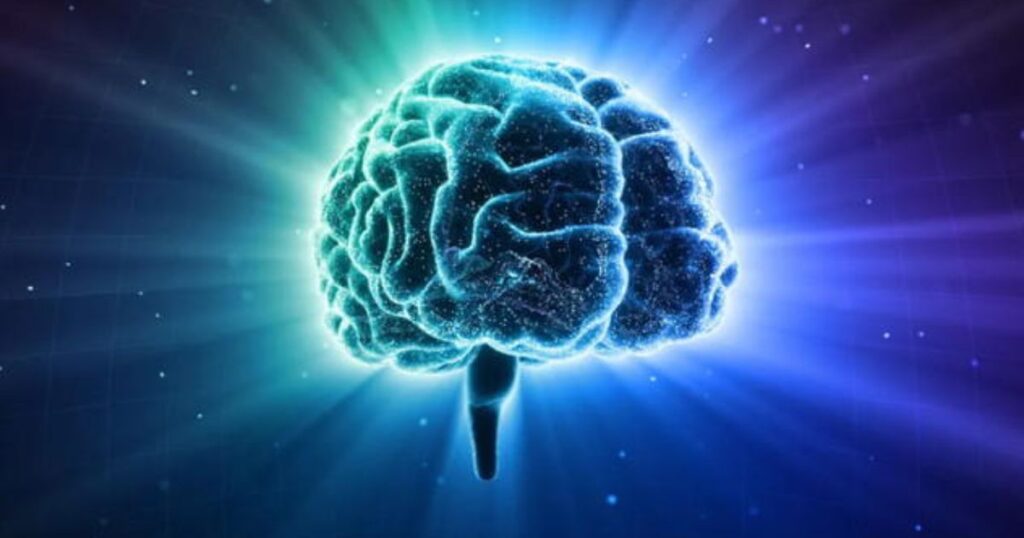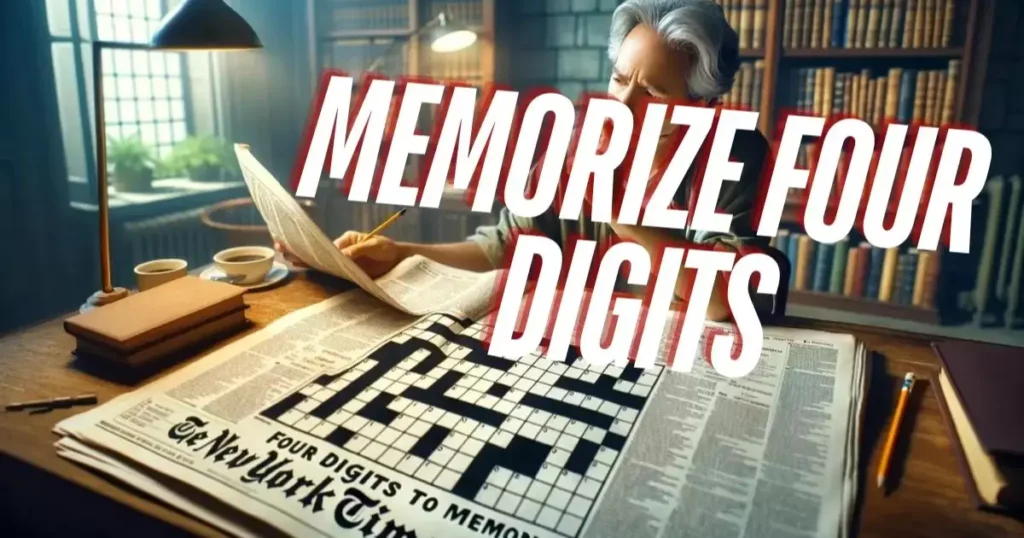You are hitting the books climbing the career ladder or just want to give your brain a boost memory techniques are the hot ticket. And among these mental gymnastics the trick of memorizing four digits to unlock New York Times (NYT) articles is a standout star. It is practical it is clever and it will give your gray matter a workout. In today’s blink and you will miss it world where information flies at us faster than a New York minute being able to grab and hold onto key facts is like having a superpower.
This “Four Digits to Memorize NYT” technique is not just about remembering a bunch of numbers. It is a gateway to sharpening your mind boosting your learning power and maybe even impressing your friends at trivia night.So Strap in because we are about to Start on a journey into the notable abilities of your brain. You might simply be amazed at what that noggin of yours can do with a little schooling.
Understanding the Importance of Memorization
Well hold onto your hats because memorization is more crucial than ever in our fast-paced, information-saturated world.
Think about the importance of memorization. When you are in a heated debate or giving a critical presentation you can not always whip out your phone to fact-check. A well-trained memory gives you instant access to a wealth of knowledge making you sharper more confident and more effective in countless situations.
“The art of memory is the art of attention.” – Samuel Johnson
This quote from the 18th-century writer Samuel Johnson hits the nail on the head. By practicing memorization .We are not just stuffing our brains full of info. We are training our minds to focus to pay attention to details and process information more effectively.
The Power of Association: Making Connections That Last

Our brains are not designed to remember random, isolated bits of information. Instead, they thrive on connections, patterns and relationships. That song is linked to memories, emotions and experiences in your brain, creating a web of connections that make it stick.The “Four Digits to Memorize NYT” technique taps into this natural strength of our brains.
By linking abstract numbers to something concrete and meaningful (in this case, the New York Times) .We are creating a mental hook that makes the information much easier to recall.
Here’s a quick breakdown of how associations work in our brains:
- Neural Networks: When we make associations we are literally creating new connections between neurons in our brains.
- Emotional Impact: Information linked to emotions is often easier to remember. (That’s why you probably remember where you were on 9/11.)
- Visual Imagery: Our brains are wired for visual processing. Creating mental images can significantly boost recall.
Decoding “Four Digits to Memorize NYT”: A Step-by-Step Guide
Alright, let’s roll up our sleeves and dive into the nitty-gritty of this memory-boosting magic trick. The “Four Digits to Memorize NYT” technique might sound fancy, but it’s actually pretty straightforward once you break it down. Here is your step-by-step guide to mastering this mnemonic device:
- Start with Your Four Digits: Let’s use 1851 as our example the year The New York Times was founded.
- Break It Down: Instead of trying to remember one big number, think of it as four separate digits: 1-8-5-1.
- Use “to” as a Bridge: This little word acts as a mental connection between your digits and your target info (NYT).
- Focus on Active Memorization: Don’t just passively read the numbers. Say them out loud, write them down, visualize them.
- Link to NYT: Create a vivid mental image connecting your digits to The New York Times.
Pro Tip: Practice this technique with different sets of numbers. Try your phone number, important dates, or even math formulas. The more you use it, the more natural it’ll become.
Applying “Four Digits to Memorize NYT” in Practice
Now that we have cracked the code of the “Four Digits to Memorize NYT” technique, let’s explore how this memory magic can be applied in various real world scenarios. This mnemonic device is not just for history buffs or New York Times enthusiasts . It is a versatile tool that can supercharge your memory in countless situations.
Historical Dates
When studying records college students regularly stumble upon a large number of dates and events. By applying “Four Digits to Memorize NYT,” they can wreck down complex years into potential chunks, facilitating keep-in-mind and comprehension.
Scientific Formulas
For students grappling with complex scientific ideas, mnemonics provide a lifeline. By reworking summary formulation into tangible pics or narratives, beginners can internalize key ideas more effectively.
Phone Numbers
In the age of smartphones, we rarely memorize phone numbers anymore. But it can still be useful:
- 555-0123: Visualize five (5) basketball players high-fiving, then seeing a big zero (0), followed by a race where one (1) wins, two (2) comes second, and three (3) third.
Beyond Memory: The Cognitive Benefits of Mnemonics
While the “Four Digits to Memorize NYT” technique is a powerful tool for boosting your memory, its benefits extend far beyond just helping you remember numbers. Using mnemonic devices like this one can provide a whole host of cognitive advantages that can enhance your mental performance across the board.
Let’s break down some of the key cognitive benefits:
- Enhanced Attention: Mnemonics require focused attention to create and recall mental associations. This practice can improve your overall ability to concentrate and pay attention to details.
- Improved Creativity: Creating vivid mental images and connections exercises your creative muscles. Over time this can enhance your ability to think outside the box and come up with innovative solutions.
- Better Problem-Solving Skills: The process of breaking down information and creating associations mimics the problem-solving process, potentially improving your ability to tackle complex issues.
- Increased Mental Flexibility: Switching between abstract concepts (like numbers) and concrete images (like your mental associations) can increase cognitive flexibility.
Memorizing Techniques for Better Recall and Retention
While the “Four Digits to Memorize NYT” technique is a powerful tool it is just one of many memory-enhancing strategies out there. Let’s explore some other memorization techniques that can complement and enhance your mental toolkit:
- The Memory Palace (Method of Loci): This ancient technique involves associating pieces of information with specific locations in a familiar place, like your home. As you mentally walk through this space, you “retrieve” the information.
- Acronyms and Acrostics: Create memorable phrases where each letter represents a piece of information. For example, “Every Good Boy Does Fine” helps musicians remember the lines of the treble clef (EGBDF).
- Chunking: Group information into smaller, more manageable “chunks”. This is why phone numbers are often written in groups of 3 or 4 digits.
- Spaced Repetition: Review information at gradually increasing intervals. This technique leverages the psychological spacing effect to improve long-term retention.
The goal is not just to memorize information but to truly understand and retain it. As the famous physicist Richard Feynman once said:
“The first principle is that you must not fool yourself – and you are the easiest person to fool.”
With practice, you’ll find that these memorization techniques become second nature, allowing you to absorb and retain information more easily than ever before. So don’t be afraid to experiment and find the combination that works best for your unique brain!
Advantages and Applications
The “Four Digits to Memorize NYT” technique, along with other mnemonic devices, offers a wide range of advantages and applications that extend far beyond simple memorization. Let’s explore some of the key benefits and real-world uses of these powerful memory tools.
Advantages
Mnemonics create stronger neural connections leading to better long-term memory and faster learning by organizing information in a brain-friendly way. They reduce cognitive load making it feel effortless to remember complex information once mastered. These techniques can boost your confidence by providing a reliable memory and practicing them enhances cognitive flexibility improving overall mental agility.
Applications
Mnemonics support academic success by helping remember key dates, formulas and concepts, and recall points during discussions or presentations. They aid in memorizing client details, delivering presentations smoothly and recalling data in meetings. In language learning, they help with vocabulary, grammar and pronunciation. They improve memory for everyday tasks, enhance social skills and potentially slow cognitive decline by providing mental stimulation and a sense of achievement.
Challenges and Limitations

While the “Four Digits to Memorize NYT” technique and other mnemonic devices offer powerful benefits. It is important to acknowledge that they are not without their challenges and limitations. Understanding these can help you use these tools more effectively and set realistic expectations.
Challenges
Like any skill, mnemonic techniques require regular practice to remain effective. Personalization is crucial as different methods. And working for different people and finding the right associations takes time. Complex systems can sometimes cause confusion and create effective mnemonics. It can be time-consuming potentially outweighing the benefits for simpler tasks.
Limitations
While mnemonics aid memory they do not ensure deeper understanding. And should be used alongside thorough comprehension. They are limited to abstract or procedural information. That can lead to over reliance potentially neglecting critical thinking. Mnemonics might also be culturally specific and for some creating and using them. It will increase cognitive load rather than reducing it.
Frequently Asked Questions
What is reminiscence mastery and why is it critical?
Reminiscence mastery involves effectively recalling and reflecting on past experiences. Which is critical for enhancing memory, emotional wellbeing and cognitive resilience. It helps maintain a sense of identity and continuity over time.
What are mnemonics and how do they work?
Mnemonics are memory aids that use associations. Such as acronyms or visual imagery to make information easier to recall. They work by creating stronger neural connections and organizing information .
How does “Four Digits to Memorize NYT” assist enhance reminiscence?
“Four Digits to Memorize” in the NYT provides structured techniques. That simplify complex information into manageable chunks enhancing memory retention and recall. It promotes the use of mnemonic strategies to improve overall cognitive function.
Can “Four Digits to Memorize NYT” be used for different forms of statistics?
Yes, “Four Digits to Memorize NYT” can use for different forms of statistics. By breaking down complex data into simpler, memorable units enhancing recall and comprehension.
Are there any cognitive advantages to the usage of mnemonics?
Yes, mnemonics enhance cognitive function by improving memory retention, reducing and increasing . They also support better organization of information in the brain.
Conclusion
Mastering the memorization of four digits like those used for NYT. Access offers significant benefits across academic professional and personal areas. By understanding memory science and applying effective techniques. You can improve memorization skills enhance efficiency and boost confidence. Integrating these methods into your routine strengthens cognitive function and sharpens your mind. This journey is both rewarding and empowering making information more accessible and secure. Start today to unlock your memory’s potential and enjoy it. The advantages of improved recall and mental agility.

